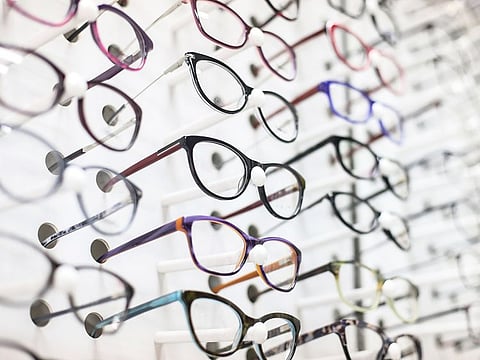Making a spectacle of myself
How come opticians never let you move that eye-test chart closer or farther away?

Why is print on packaging and labels getting smaller? I used to be able to read them. Now, I can’t.
I no longer can make out whether there’s too much salt or artificial flavourings in the items on the store shelf — and I don’t think the good folks in the supermarket would want me opening up bottles and sticking my finger in them to see if there’s the right amount of salt.
But it’s not just packaging that’s small nowadays.
Here’s the funny thing too — it’s taking my eyes a lot longer to focus on my mobile phone. Thankfully, I can set my preferences from small to medium type when I scroll through my emails. And the view setting on my laptop has been adjusted as well
I find that the people who produce newspapers now are making the print smaller, harder to read, harder to define.
The lines seem to run together and it’s much harder to make out what journalists or editors are saying now that they’ve gradually managed to reduce the size of print.
Most of the news is likely bad, so maybe the editors have made print smaller and less defined so that they won’t upset people like me who like to read newspapers.
Here’s the funny thing too — it’s taking my eyes a lot longer to focus on my mobile phone. Thankfully, I can set my preferences from small to medium type when I scroll through my emails. And the view setting on my laptop has been adjusted as well.
Also Read: In spring fields and summer hedgerows
Also Read: When the postman comes calling
Also Read: Who is stealing my socks?
I am able to exercise my arms now moving papers and books in and out, towards and away from my reading glasses until it all comes into focus.
“They’re not making the type smaller,” my daughter tells me. “You work in newspapers. You know that. It’s your eyesight.”
Nope, couldn’t possibly be. I have been wearing reading glasses for the past four years and they seem to be mostly working fine — as long as I adjust my arm to get everything just right.
“You need new glasses,” the daughter says.
Couldn’t possibly need new glasses, I object. I’ve had them for four years, they are branded and have good frames and still fit comfortably on my ears.
“No, not new glasses — a new prescription,” the daughter says.
When I’m driving I can see everything just fine. And I can spot things on the horizon on the sea — there’s nothing wrong with my eyesight.
“Dad,” she says. “You’re short-sighted.”
Me? Short-sighted? When I live in Spain for part of the year, I always make sure I have sun cream on when I go out, the freezer’s mostly full of food and, despite a lot of covidiots panic-buying toilet paper and the like, I’m well stocked up there. I haven’t run out of petrol since 1996.
“It’s your eyes. You’re getting older,” she says. “Everyone’s eyes change when they get older.”
Excuse me, madam, I protest. Honestly, children today — she is 31 you know and thinks she’s an adult — there’s nothing wrong with my eyes. It’s not me. It’s the packagers and printers.
“They’re making packets smaller,” I protest. It’s that they can keep the price up but put less in them.
No, the daughter says, the writing is the same size. No, I protest, the print is smaller so they can save money on ink.
Right now, many eye stores are closed. I can’t get tested. Besides, when I do, I know the test result is rigged. Those sneaky opticians — that eye chart with all of the random letters that gets smaller row by row — those sneaky opticians never let you move it backwards and forwards just like you’d do at home.
I’m telling you, once you step foot in an eye store and once they start testing you under their conditions, you always end up with a pair of glasses. It’s a slippery slope.
Sign up for the Daily Briefing
Get the latest news and updates straight to your inbox



